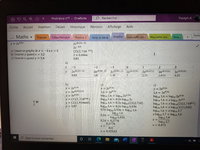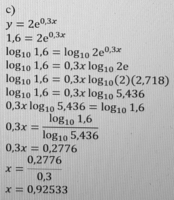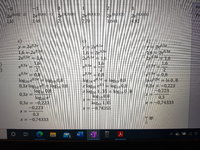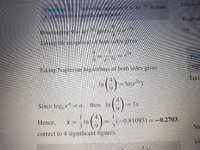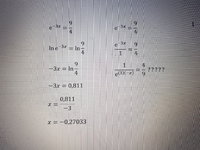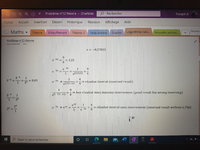Yuseph
Junior Member
- Joined
- Aug 5, 2020
- Messages
- 68
Yo guys,
Look Im trying to answer question c : find x when y = 1,6.
I know the answer is x = - 0,74. Because its in the book and because my graphing calculator says so. But i have no idea how to get there using only algebra. The author skipped that part.
As youll see in the picture I made 2 pathetic attempts using logarithm but there re two problems. Firstly in chapter logarithm there was never an exercice that showed taking out only half the exponent and switching to lhs of log. And im too new to know if its possible or not. Secondly if i proceed otherwise and take out both 0.3 and x then e is left alone and i dont think theres such a thing as e alone without exponent. Now it could be that its not about logarithm at all. I really dont know.
Look Im trying to answer question c : find x when y = 1,6.
I know the answer is x = - 0,74. Because its in the book and because my graphing calculator says so. But i have no idea how to get there using only algebra. The author skipped that part.
As youll see in the picture I made 2 pathetic attempts using logarithm but there re two problems. Firstly in chapter logarithm there was never an exercice that showed taking out only half the exponent and switching to lhs of log. And im too new to know if its possible or not. Secondly if i proceed otherwise and take out both 0.3 and x then e is left alone and i dont think theres such a thing as e alone without exponent. Now it could be that its not about logarithm at all. I really dont know.

